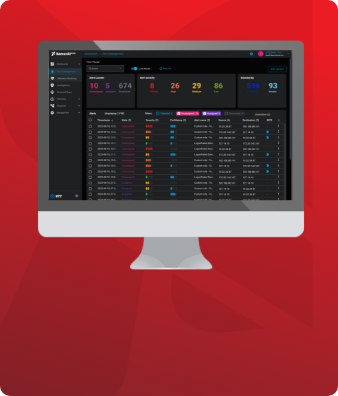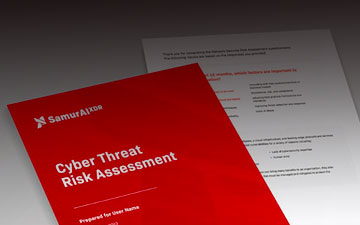Extended detection and response (XDR) represents the evolution of network detection and response (NDR) as well as endpoint detection and response (EDR) security solutions. NDR focused on analyzing network activity to provide security from malicious actors attempting to gain unauthorized access to enterprise computing and data resources.
XDR takes NDR to a new level of functionality by addressing an organization’s endpoints as well as its network. It essentially consolidates NDR with EDR to provide more complete and holistic security. XDR also makes enhanced security available to everyone with a cloud-based SaaS solution that works for companies of any size.
Three Benefits of XDR
XDR offers businesses a comprehensive, scalable cybersecurity solution for networks and endpoints. Following are three key benefits of XDR.
Initiating reactions to breaches
XDR offers adaptable responses to a breach based on where it is taking place and its potential danger to the device or network. The service employs standardized responses that can be scaled to address threats facing multiple endpoints or network workflows.
Automation
The automation capabilities built into XDR solutions enable faster and more accurate responses to detected threats. Automation also reduces the workload on security teams, giving them more time to handle issues outside the scope of XDR. An additional benefit of automation is the reduction of human errors made by overburdened staff for more effective threat response.
Increased infrastructure visibility
The end-to-end visibility provided by XDR incorporates the endpoints addressed by EDR and the network view provided by NDR. XDR helps alleviate the problem of too many information sources, and uses advanced analytics to uncover the needle in the haystack or a well-disguised APT. This comprehensive view of the computing environment enables organizations to optimize network security.
How XDR Operates
XDR addresses cybersecurity threats to your infrastructure in three foundational ways.
Identifying threats
XDR can analyze large volumes of data with accuracy and precision to identify threats that escape the attention of other cybersecurity solutions. XDR locates hard-to-identify and stealthy threats in the environment and enables security teams to hunt threats in its data lake with sophisticated tools.
Assessing threats
Artificial intelligence (AI) and machine learning (ML) are employed by XDR to assess the severity of identified threats and prioritize them. Threats that need to be addressed immediately are provided to a security team, saving them time and ensuring that any risks to the environment are minimized.
Investigating threats
The investigative capabilities of XDR provide extensive information regarding the origin, spread, and activities of identified threats. Combined with the knowledge available from MITRE ATT&CK and other frameworks, this information facilitates enterprise understanding of attackers' tactics and techniques. Organizations can then better respond to and neutralize security threats before they damage the environment.
The Use of XDR Security Solutions by IT Service Providers
Implementing XDR security solutions provides the benefits discussed above and a deep understanding of the risks that threaten infrastructure elements. Businesses in many industries can take advantage of these benefits. Following are some examples of how XDR solutions enhance cybersecurity in the IT service industry. These benefits are then passed on to customers to improve their security.
Security operations centers (SOCs)
Analysts working in SOCs are tasked with identifying and remediating risks to the computing environment. This is often complicated by the need to use multiple tools and navigate the noise they generate. Implementing XDR can improve the effectiveness of a SOC in multiple ways that include:
- Consolidating telemetry from endpoints, networks, and the cloud for more efficient and effective detection, investigation, and response to threats;
- Guiding incident response through intelligent automation to streamline threat remediation;
- Improving SecOps team efficiency and productivity while enabling advanced threat hunting for proactive threat detection and response.
Managed detection and response (MDR) service providers
MDR service providers must be on top of their game to ensure their clients’ environments are kept secure. The addition of XDR capabilities supplies substantial benefits to MDR service providers including:
- Addressing the sophisticated threats present in an expanding attack surface that current solutions cannot handle effectively;
- Increasing productivity by streamlining detection and response and freeing up security professionals to hunt for emerging threats and implement new solutions;
- Minimizing the lack of experienced security professionals through the use of intelligent automation to accomplish complex tasks.
Use Cases for XDR Security Solutions in Specific Industries
Following are examples of how implementing an XDR solution benefits individual companies operating in specific industries. Businesses in these industries have high-value data resources which make them an attractive target for threats from cybercriminals.
Banking and financial institutions
Banks and other financial institutions offer a prime target to cybercriminals. Before the advent of computers, banks were targeted by traditional criminals. The financial industry has invested substantial sums of money over the years to maintain the security of its computing infrastructures. Typically banks have been reasonably successful in keeping their systems secure. The battle against emerging cyber threats has put a strain on the cybersecurity resources of financial institutions, forcing them to look for cost-effective methods of improving security.
XDR can be instrumental in protecting these organizations from targeted attacks and improve cybersecurity in several ways that include:
- Controlling endpoint data deluge and alert fatigue generated by the need to use multiple tools in an attempt to gain visibility into the environment;
- Thwarting sophisticated Chronos attacks that manipulate timestamps to disrupt and manipulate market strategies;
- Identifying threats generated by remote access tools (RATs) used by cartels to launch ransomware attacks.
Healthcare providers and related industries
The personally identifiable information (PII) collected, stored, and processed by companies in the healthcare industry is an inviting target for identity thieves and scammers. Companies operating in the healthcare space include large hospitals, small practitioners, and health insurers. XDR is available as a service to any organization delivering healthcare.
Healthcare companies of all sizes are more prone to cyberattacks on cloud infrastructure than virtually any other vertical market. XDR improves cybersecurity in healthcare by:
- Providing threat detection, response, and visibility into the complete environment, including all cloud resources;
- Minimizing the threat to IoT devices which are becoming increasingly prevalent throughout the healthcare industry to improve patient care and communication;
- Addressing the shortage of skilled security teams by simplifying and automating threat detection and response;
- Identifying the weak signals that may indicate the presence of advanced persistent threats (APTs) used to compromise PII.
The retail industry
The retail industry presents a varied and complicated attack surface for cybercriminals to target. The use of IoT devices for accepting payment and providing customers with information has made it imperative that advanced security approaches such as XDR are adopted by businesses. Specific risks to retailers that can be minimized by implementing XDR include:
- Fraud perpetrated on ‘Buy Online, Pickup in Store’ (BOPIS) orders, also known as ‘click and collect’, that are performed without a card being present, shifting the risk to the retailer;
- IoT devices such as self-checkout and mobile payments kiosks that can be compromised and used to launch cyberattacks;
- Attacks on the third-party software supply chains used to power IoT devices.
Samurai’s Solution for Any Industry
The examples discussed above illustrate the ways XDR can benefit businesses operating in specific industries. Companies in virtually any industry that relies on a secure computing environment can benefit from incorporating Samurai’s XDR solution into their cybersecurity portfolio. The service provides the visibility and advanced functionality to detect and respond to threats before they impact business-critical infrastructure.
Get in touch with Samurai to see for yourself how XDR can improve your cybersecurity. Request an invitation to Samurai’s XDR SaaS Beta to get a hands-on view of how this service keeps your environment secure.
Featured articles
Identity Management in the Physical and Digital Worlds
7 August 2024 | Webinars
In today's rapidly evolving world, managing identities securely and efficiently is more crucial than ever. Join us for an insightful...
Identity Management in the Physical and Digital Worlds
30 July 2024 | Webinars
In today's rapidly evolving world, managing identities securely and efficiently is more crucial than ever. Join us for an insightful...
XDR for Small and Medium Businesses: Is It Worth It?
24 July 2024 | XDR
Cybersecurity is of paramount importance to virtually all organizations and SMBs have to address several specific challenges. The failure to...





